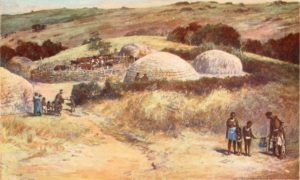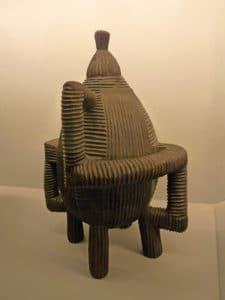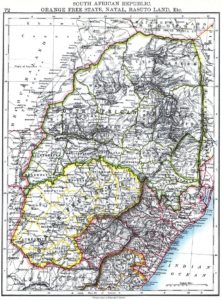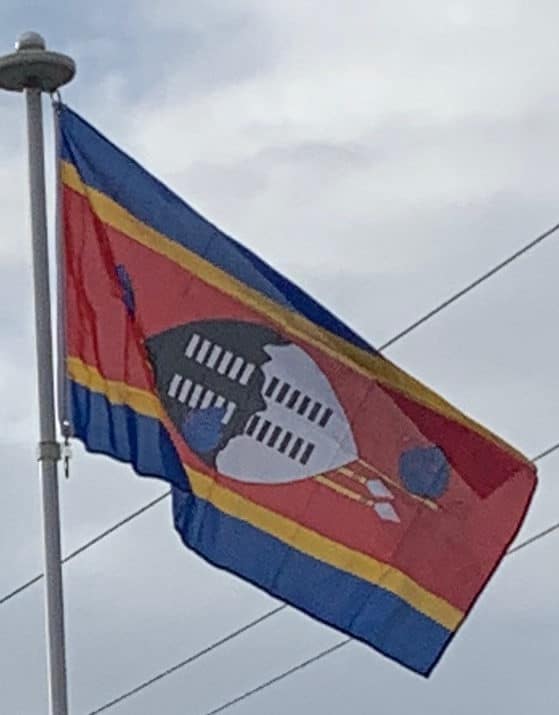
The earliest known inhabitants of the region were Khoisan hunter-gatherers. They were largely replaced by the Nguni during the great Bantu migrations. These peoples originated from the Great Lakes regions of eastern and central Africa. Evidence of agriculture and iron use dates from about the 4th century. People speaking languages ancestral to the current Sotho and Nguni languages began settling no later than the 11th century.
Swazi Settlers – 18th and 19th Centuries:
The Swazi settlers, then known as the Ngwane (or bakaNgwane) before entering Eswatini, had been settled on the banks of the Pongola River. Before that, they were settled in the area of the Tembe River near present-day Maputo, Mozambique. Continuing conflict with the Ndwandwe people pushed them further north, with Ngwane III establishing his capital at Shiselweni at the foot of the Mhlosheni hills.
Under Sobhuza I, the Ngwane people eventually established their capital at Zombodze in the heartland of present-day Eswatini. In this process, they conquered and incorporated the long-established clans of the country known to the Swazi as Emakhandzambili.

Eswatini derives its name from a later king named Mswati II. KaNgwane, named for Ngwane III, is an alternative name for Eswatini, the surname of whose royal house remains Nkhosi Dlamini. Nkhosi literally means “king”. Mswati II was the greatest of the fighting kings of Eswatini, and he greatly extended the area of the country to twice its current size. The Emakhandzambili clans were initially incorporated into the kingdom with wide autonomy, often including grants of special ritual and political status. The extent of their autonomy, however, was drastically curtailed by Mswati, who attacked and subdued some of them in the 1850s.
With his power, Mswati greatly reduced the influence of the Emakhandzambili while incorporating more people into his kingdom either through conquest or by giving them refuge. These later arrivals became known to the Swazis as Emafikamuva. The clans who accompanied the Dlamini kings were known as the Bemdzabuko or true Swazi.
The autonomy of the Swazi nation was influenced by British and Dutch rule of southern Africa in the 19th and early 20th centuries. In 1881, the British government signed a convention recognizing Swazi independence despite the Scramble for Africa that was taking place at the time. This independence was also recognized in the London Convention of 1884.

Because of controversial land/mineral rights and other concessions, Swaziland had a triumviral administration in 1890 following the death of King Mbandzeni in 1889. This government represented the British, the Dutch republics, and the Swazi people. In 1894, a convention placed Swaziland under the South African Republic as a protectorate. This continued under the rule of Ngwane V until the outbreak of the Second Boer War in October 1899.
King Ngwane V died in December 1899, during incwala, after the outbreak of the Second Boer War. His successor, Sobhuza II, was four months old. Swaziland was indirectly involved in the war with various skirmishes between the British and the Boers occurring in the country until 1902.
British Rule over Swaziland – 1906–1968:
In 1903, after the British victory in the Second Boer War, Swaziland became a British protectorate. Much of its early administration (for example, postal services) was carried out from South Africa until 1906 when the Transvaal Colony was granted self-government. Following this, Swaziland was partitioned into European and non-European (or native reserves) areas with the former being two-thirds of the total land. Sobhuza’s official coronation was in December 1921 after the regency of Labotsibeni, after which he led an unsuccessful deputation to the Privy Council of the United Kingdom in London in 1922 regarding the issue of the land.
